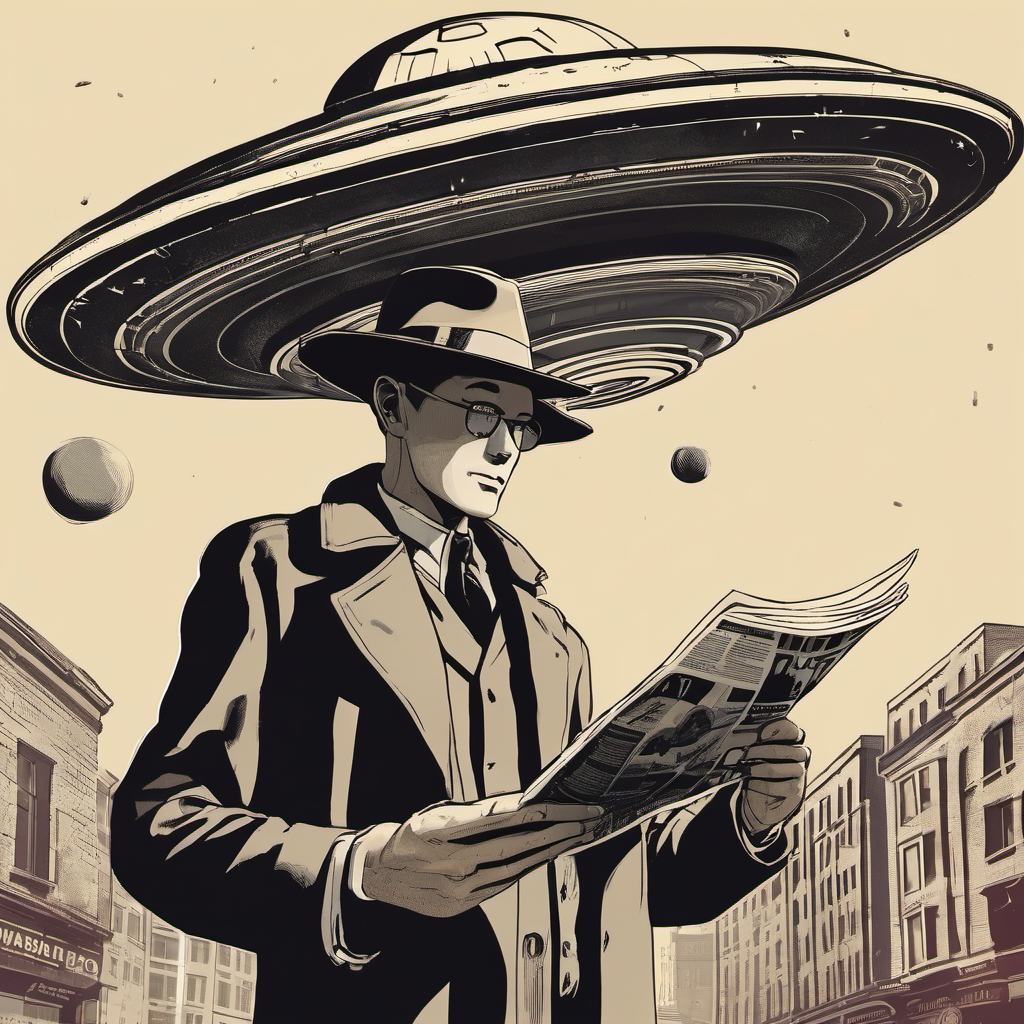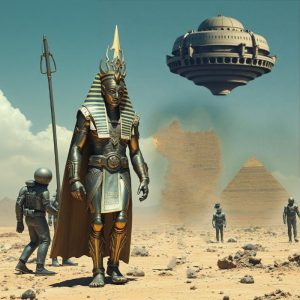 By KEN KORCZAK
By KEN KORCZAK
New science fiction novel paints a bleak picture of a future Earth devastated by climate change, but survivors are leveraging super science to start anew and create a brighter future
I was thrilled to get Book 2 in a 5-volume science fiction epic titled Until the Last by author Felicity Harley. I took my paper-in-ink copy of Homo Deus (Man God) out to my favorite summer reading locale — the gazebo in my yard — and could not help but notice a certain synchronistic confluence between this book and my current reality.
That’s because the book is set in a dystopian future where the Earth’s ecosystem has suffered a catastrophic collapse precipitated by out-of-control global warming and an array of other toxic Industrial Age pollutants, including the ravages of petrochemical agriculture, massive wildfires, overfishing of the oceans, and more.
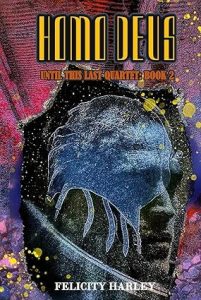
So, when I went outside to read, the visibility here on this late June day was about one mile. That’s because my remote, northern Minnesota region is occluded with a cloying haze of white smoke.
It’s wafting down to us from Canada, where massive forest fires are burning out of control across several provinces, from British Columbia to my neighbor to the north, Manitoba. I’m just 20 miles from the border.
What’s worse is that it’s not an anomaly. For the past five years or so, the onset of early summer has meant deplorable air quality conditions. It regularly gets so bad that authorities recommend avoiding outdoor exposure for more than an hour or two.
For people with pre-existing conditions like asthma, our once blissful summertime days in northern Minnesota are now essentially akin to a sentence of house arrest.
Additionally, spring, summer and fall are now dispersed with increasing numbers of days that are not just hot — it’s broiling hot. It’s now common to reach staggering temperatures of 100 (Fahrenheit) on any given day in May and June, once a fantastic rarity in our normally coolish spring/summer season.

I am eager to get on with my review of Ms. Harley’s book, but I’ll make one more mention of an astonishing aspect and agonizing outcome of global warming and overuse of toxic agricultural chemicals.
It is the disappearance of so many of my beloved friends.
I’m talking about birds, mostly. My home is just a few miles from a large, swampy wildlife preserve, Twin Lakes Wildlife Refuge, normally a paradise for birds and many other animals. However, just off the top of my head, I can name at least 10 species of birds that no longer show up in my yard. They were once abundant here every summer. A shortlist of the wonderful avian friends I no longer or very rarely glimpse includes:
- Barn swallows
- Tree swallows
- Baltimore orioles
- Bluebirds
- Meadowlarks
- Wrens
- Harris sparrows
- Purple martins
- Catbirds
- Nuthatches
Surprisingly, these small, delicate creatures are not the first to vanish from my corner of northwest Minnesota. Look at the following picture:
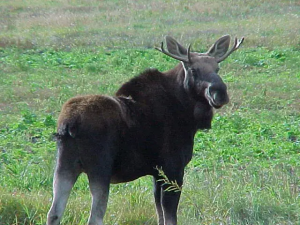
This is the last photo I captured of a moose. Indeed, it was the last time I saw a moose here in the northwest region of our state.
When did I take this photo? The year was 1997. That’s right — I have not seen a moose here in 28 years — when before, spotting a moose roaming our aspen-oak savannahs was a weekly occurrence.
It happened fast. The moose population here went from “robust and abundant” to “extinct” in about 15 years. Their numbers have been reduced by 60% statewide. The moose population continues to decline in Minnesota and southern Manitoba.
Will the moose soon be another victim of what our scientists call the Holocene extinction or Anthropocene extinction — the sixth mass extinction of species in the billions of years’ history of Earth — happening right now?
SCIENCE FICTION, SCIENCE FACT
My reality scenario is just one reason I find Felicity Harley’s new SF novel so compelling. The best science fiction is that which hews closely to “real science” and certain facets of reality while presenting fantastic, intriguing and exciting extrapolations that nevertheless remain plausible.
In the first offering of her 5-part series, appropriately titled The Burning Years (SEE MY REVIEW), Harley effectively describes an Earth in the final stages of an eco-apocalyptic disaster brought on by a planet critically overheated by climate change.
It forces the powerful elites of government and private corporations to build massive underground cities where a lucky, select few — the rich, brilliant, powerful and connected — retreat to survive what is likely to be centuries of an inhabitable planetary surface.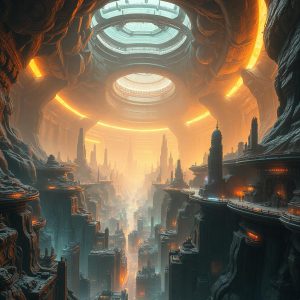
Now in Book Two, Earth’s surviving underground population has been dwelling for more than a century in subterranean colonies bolstered by mega-advanced super science.
Underground life is actually not so bad, thanks to incredibly advanced technologies that include AI, marvelous new synthetic building/architectural materials, spectacular advances in engineering, genetic manipulation, aerospace, synthetic food production and much more.
REINCARNATION-RECONSTITUTION OF AN ANCIENT ALIEN
But now Harley takes her vividly created future scenario into new territory with a fresh and intriguing storyline. I love it when a science fiction writer takes off on a tack I did not expect.
In this case, the central premise is driven by one of the protagonists’ decisions to use genetic splicing to effectively “reincarnate” a member of an ancient alien race that dwelt on Earth thousands of years ago.
That race would be the quasi-mythological Anunnaki. It’s a fun and juicy scenario for those of us who not only love SF — but also like to entertain the possibility that gods once worshipped in ancient Sumer and Egypt were actually “ancient aliens” that came to our planet for their own complex agenda.
Home Deus begins with a brilliant bio-geneticist, Sophia, visiting an Earth colony established on Mars. It was on the Red Planet that she explored the remains of an ancient civilization consisting of massive pyramids, temples and vast underground facilities.
That’s where Sophia discovers the bones of one of the last survivors of yet another planetary catastrophe that destroyed a once-habitable or, at least, occupied Mars. The humanoid specimen is a giant — maybe more than 9-feet tall — and turns out to be one of the Anunnaki, an ancient deity described in the cuneiform tablets of the Sumerians, Akkadians, Assyrians and Babylonians.
It turns out that the Anunnaki were not mythical gods but real aliens from the hypothetical planet of Nibiru. The latter is a proposed but heretofore undetected planet in our solar system. The reason it has remained unseen is its extremely elongated, elliptical orbit. It only comes close to Earth orbit in several-thousand-year cycles.
Sophia hatches (no pun intended) a bold plan to use the DNA from one of her ovarian eggs (oocyte) and splice it with the DNA of the long-deceased Anunnaki. She is successful and creates a new, hybrid lifeform. This exotically engineered embryo is nurtured in a nutrient-rich tank back on Earth, where it swiftly matures to adulthood.
The result is nothing less than the rebirth of a 7-foot-tall Anunnaki-human hybrid who remembers who he was in his previous incarnation as a full-blooded member of the alien Anunnaki race.
He even recalls his previous name — which is Ningishzida — and that he was a prominent member of a powerful Anunnaki royal family. Ningishzida, called Zid for short, is the son of Enki, the Sumerian god of water, knowledge, crafts and creation. Zid’s mother was Enki’s sister, Ninmah.
Note that scholars of ancient history sometimes equate the Sumerian Ningishzida with Thoth, the Egyptian god of knowledge. Both figures command the same symbol, which is comprised of a central staff entwined with the double serpent. The ancient Greeks called it the caduceus. It is still used today as a symbol in our modern medical system. Furthermore, both Ningishzida and Thoth bear a strong resemblance to the Greek god Hermes.
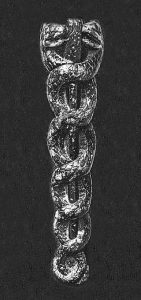
In Harley’s yarn, Ningishzida stacks up to be not only an intellectually brilliant demigod, but he is also the very engineer who designed and oversaw the construction of the Egyptian pyramids!
The Great Pyramid of Giza and the others were not pharaonic burial monuments after all — they were huge power-generating machines that could tap into natural Earth energies that could then be applied to an array of uses.
HE SWITCHES THE PYRAMID BACK ON
As usual, I have gone on too long with my review; however, I want to make a final mention of one aspect of this book I found terrific — science fiction at its best.
It’s the marvelous way the author describes the “mechanisms” and details of how the pyramid functions as a power device. Harley doesn’t “fudge it through” with glossed-over pseudo-technobabble (like they so often do on Star Trek). Instead, she provides intricate details of how the pyramid operates. For example:
· Granit baffles that act as acoustic filters.
· How the Queens Chamber was used as a vital chemical holding cell.
· Resonators that filled 27 slots on the Grand Gallery were used to raise the vibratory frequency to generate airborne sound.
This vibratory energy is focused up into the King’s Chamber, where there are 43 red granite/crystal beams, which Zid explains:
“The red beams were the cornerstone of my work … they are cut square and are parallel on three sides, but the top surface of each one is uneven, and some even have holes gouged into them … I designed them like a musical instrument so that once the beam starts oscillating, it would transfer the sound to the others, and then they all would be able to vibrate in unison so as to create scalar waves.”
Zid goes on to explain that the red granite beams vibrate like guitar strings, which makes sounds that correlate with natural Earth frequencies to create useful types of energy — he also adds that the system is driven by hydrogen.
So, let me ask you something, my friends:
Do you think it’s easy for a writer to put words in the mouth of a reincarnated, engineering-genius alien and make it sound plausible, believable and natural?
The answer is: It’s not easy! But Felicity Harley pulls it off.
Indeed, writing credible dialogue for an advanced alien or a highly evolved human has long been a challenge within the science fiction genre. One of the first writers to find a workable solution was the Canadian-born SF Grand Master A.E. Van Vogt.
In his groundbreaking 1940 novel, Slan, van Vogt posits a race of advanced superbeings called Slans. They are humans who have been genetically manipulated to be superior to regular people.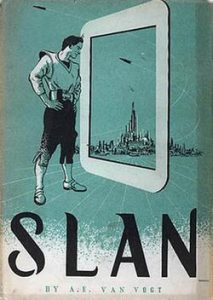
A.E. van Vogt understood he faced a difficult literary challenge. Plenty smart but obviously not an advanced superbeing himself — how could he describe the actions, motivations and create the dialogue for an entity that was far in advance of his own intellect without making it seem phony?
Van Voght’s solution was to create a character called Jommy Cross, who was a Slan, but still a child. As a youth, Jommy Cross had not yet matured into “superbeing” status. In that way, Van Vogt could bring his character “down to size,” so to speak, and make him relatable without seeming contrived.
Felicity Harley solved the problem by making her superbeing a human-alien hybrid. As such, his character can relate to his human compatriots on a level we can all understand yet still be in awe of his transcendent knowledge and capabilities.
Well, I could go on and on. I’ll stop here, however, after saying that Homo Deus, Book 2 of the To the Last 5-part series, gets my top recommendation.
JOIN ME ON BLUESKY: KEN-ON-BLUESKY
NOTE: For more in-depth reviews of science fiction, please see: KEN-ON-MEDIUM.
